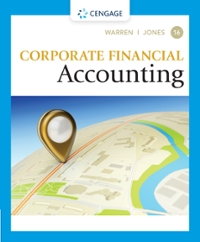Question
step by step solution required Daihatsu is the oldest Japanese car manufacturer and is a subsidiary of Toyota. Recently, Daihatsu announced that it would offer
step by step solution required
Daihatsu is the oldest Japanese car manufacturer and is a subsidiary of Toyota. Recently, Daihatsu announced that it would offer customizable bumpers for its Daihatsu Copen model. The bumpers (front and rear) will be produced using additive manufacturing, also known as 3D printing, in a small facility outside Osaka. This problem is only about the cost structure of the Osaka facility, during December, the first month of production (so there is no inventory in the facility at the start of the month).
The Osaka facility has two processes, printing and finishing. All bumpers must pass through each process. Facility overhead costs are allocated to the two processes based on machine hours, using a pre-determined (normal) overhead rate. Within each process, allocations are all made using actual costing. The facility uses weighted average cost flow assumption, and does NOT pro-rate estimation errors. Note that although each bumper can be customized, for costing purposes Daihatsu treats all front bumpers as identical and all rear bumpers as identical.
Printing: During December, plastic with a total actual cost of 450,000 entered production, at the start of the printing process. Rear bumpers require exactly 5 kg of plastic and front bumpers require exactly 3 kg of plastic. Printing overhead (which includes all costs other than the plastic) is allocated to units produced based on the weight of the unit. There is no work-in-process in printing at the end of December. Printing had 12,150 actual machine hours.
Finishing: The finishing process consists of polishing, cleaning and painting the customized bumpers. Finishing has no costs other than overhead, which is allocated based on the number of units - Daihatsu assumes that all bumpers (front and rear) required the same amount of finishing. At the end of December, the Osaka facility has completed and sold 220 rear bumpers and 250 front bumpers. An additional 80 rear bumpers are 75% complete with respect to finishing. Finishing actually had 4,240 machine hours.
Actual overhead for the facility was 1,442,320 in December.
The Osaka facility's budget for December included:
Cost of plastic: 360,000
Cost of facility overhead: 1,190,000
Machine hours - printing: 10,000 hours
Machine hours - finishing: 4,000 hours
1. How much overhead cost will be allocated to the printing process for the month of December? __________
2. What will be the cost of one completed front bumper at the end of December? __________
3. What is the total value of work-in-process inventory at the end of December? __________
4. How much over or under applied overhead did the Osaka facility have for the month of December? Your answer should include both an amount and a direction. __________
5. The current cost system assumes that the finishing cost of each unit is the same, regardless of the size of the unit. In fact, costs are somewhat higher for heavier units. Specifically for the month of December, what effect (if any) will this incorrect assumption have on (for each, circle one of the three choices):
Total cost of production: Under-costed Correctly costed Over-costed
Total cost of rear bumpers produced: Under-costed Correctly costed Over-costed
Total cost of front bumpers produced: Under-costed Correctly costed Over-costed
Total cost of inventory at December 31: Under-costed Correctly costed Over-costed
Total cost of goods sold for December: Under-costed Correctly costed Over-costed
Step by Step Solution
There are 3 Steps involved in it
Step: 1

Get Instant Access to Expert-Tailored Solutions
See step-by-step solutions with expert insights and AI powered tools for academic success
Step: 2

Step: 3

Ace Your Homework with AI
Get the answers you need in no time with our AI-driven, step-by-step assistance
Get Started


